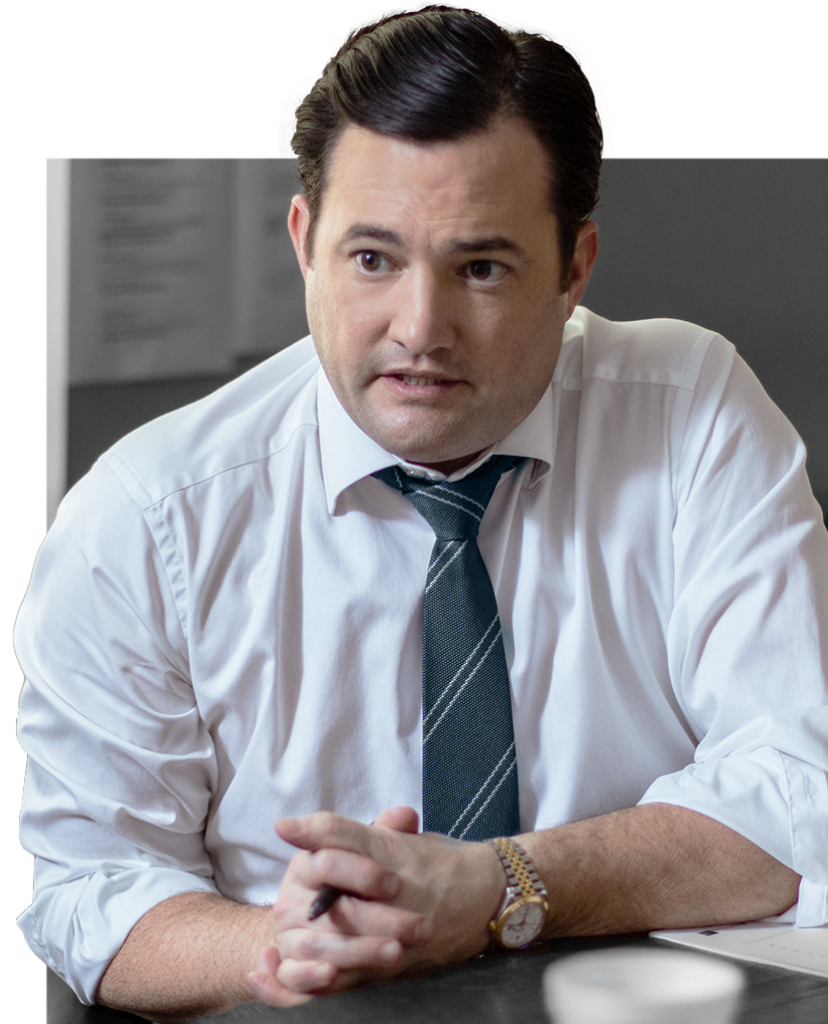Vehophobia is defined as the fear of driving. It is a common phobia, especially for those who have been in a severe motor vehicle accident. It can also occur in people who have not experienced car wreck trauma but is most prevalent in those who have. Many people choose to abstain from driving or need others in the car to help them get through the experience.
The anxiety and fear associated with vehophobia can feel overwhelming. It can change your ability to live your life, get to work, and even socialize with friends and family. It is a debilitating condition and it is essential you seek treatment for it. When a negligent driver caused your fear of driving, they should be responsible for your damages. These could include the harms associated with not only your accident but the continuing trauma and treatment costs of your vehophobia.
Below, we discuss vehophobia in detail, including causes, symptoms, and how to overcome it.
What Is Vehophobia?
Vehophopbia is a fear of driving and is considered a specific phobia. Specific phobias are some of the most common anxiety disorders, but phobias like vehophobia are incredibly disruptive when you are the one who suffers from them. The term vehophobia derives from the Latin word “veho,” which means to drive, and the Greek word “phóbos,” which means fear. Other similar phobias include:
- Amaxophobia – the fear of riding in a vehicle
- Hodophobia – the fear of traveling
Vehophobia and Post-traumatic Stress
Vehophobia following a car accident is a type of post-traumatic stress disorder (PTSD). This is a difficult mental health problem to face. It can affect not only someone injured in an accident but even those around them who saw the victim’s suffering. For example, assume your daughter was in a terrible car accident and suffered catastrophic injuries. It took her a long time to recover and the process was very painful.
The trauma of what your daughter went through could cause vehophobia for you. This is a type of PTSD, even though you did not suffer the physical injuries yourself. If you did suffer physical injuries, the likelihood of vehophobia is even higher. You had to endure the pain and difficulties associated with your recovery. You also had to deal with the financial burdens and stress following the accident.
Causes of Vehophobia
Vehophobia commonly occurs after a person is seriously injured or almost killed in an accident. It can also happen to family members when they lose a loved one due to a wrongful death. One study even showed that up to one-third of individuals in car accidents suffered PTSD from the accident, which often included vehophobia. The trauma of a car accident can be horrific for those in them and those who had to see the damage they did.
Other potential causes of vehophobia include:
- Witnessing an accident while you were driving
- Seeing a loved one or other person killed in an accident
- Being the victim of road rage or intentional assault from another driver
- Driving in intense storms or bad weather conditions
- Being traumatized by a parent or driving instructor while you learned to drive
- Reading about accidents in the media
- Experiencing a near-death accident in a car
Vehophobia is a significant trauma. While several situations may cause it, car accident victims commonly suffer from this phobia. When a negligent driver caused the accident, they may be liable for your vehophobia symptoms and treatment.
Development of Vehophobia
Vehophobia develops differently for every individual. It may happen suddenly and acutely. It may instead occur subtly over time. If you experienced a serious car accident, you might develop a fear of driving that lasts for several months. It is intense and sudden due to your motor vehicle accident. You may feel like you will never drive again or need some time away from driving.
Other causes of vehophobia are more subtle, and onset may be much slower. For example, if your parents have constantly told horror stories about driving, you may slowly develop a fear of getting behind the wheel. You might first avoid harsh weather or dense traffic but later realize you fear all types of driving. You might even reach a point where you stop driving altogether.
Each person’s fear is different as well. You may fear driving for reasons such as:
- The possibility that you might get into another accident, despite having a good driving record before the most recent accident.
- The thought of driving causes severe anxiety and makes it impossible to drive.
- The fear that you could hurt or kill someone or their family.
- The fear that you will have a panic or anxiety attack while driving and cause an accident.
Everyone is different, and how your vehophobia developed may depend on its cause. The earlier you notice vehophobia symptoms, the sooner you can do something about them. Like many phobias, earlier treatment of vehophobia often has better results.
What Are the Symptoms of Vehophobia?
There are many common symptoms of vehophobia. Your symptoms may be the same or different, but frequent symptoms of this phobia include:
- Panic or anxiety attacks while driving (or even thinking about driving)
- Sweating, trembling, and shaking
- Difficulty breathing or hyperventilation
- Increased heart rate
- Avoidance of traveling by car, whether driving or as a passenger
- Feeling tense or jumpy while behind the wheel
- Chest pain and nausea
- Making excuses to avoid driving
- Separation from social events, friends, or other activities because you fear driving there
- Feelings of excessive fear
- Tenseness in the muscles or shoulders
These symptoms may be limited to certain types of vehicles, or they could include all traveling. Imagine that you were in a bad motorcycle accident and lost a loved one as a result. You may only fear getting back on a motorcycle. The sight of a motorcycle may trigger memories of the accident and the loss of your loved one. However, a car may not trigger the same fears. For other people, all driving may trigger their vehophobia.
Every person’s symptoms are individual to them, as yours are to you. You know what you are going through and what you are feeling as a result of your vehophobia. Whether these symptoms represent you or not, vehophobia is a real condition that may be affecting your life after an accident. When this is the case, treatment for your fear can help you overcome what you are going through.
Symptoms as a Passenger
You may experience the same fears and symptoms even if you are not the person driving. Many people fear driving even while being transported in a car or other motor vehicle. This is common and is related to your vehophobia. You may be entitled to financial compensation for what you are going through and have been through because of a car accident.
Treatment for Vehophobia
Vehophobia is a common symptom after a car accident, but treatment options exist to help. Avoiding cars or driving can negatively affect your life, and treatment may help you reclaim what was stolen from you by a negligent driver. Some of the most common and effective ways to treat a fear of driving include:
- Individual Therapy. Individual therapy sessions with a licensed counselor, psychologist, or psychiatrist may be appropriate in your situation. Professional help mixes behavioral and cognitive strategies to help you overcome your anxiety and get back behind the wheel.
- Driving Classes. For some, the fear of driving is about their ability to drive safely. This may be true even when someone else was to blame for the accident that caused their vehophobia. If this is true for you, driving classes may help you feel in control. They teach drivers how to prepare for dangerous situations and the unpredictability of other drivers.
- Medication. Medication may be appropriate in certain situations. For phobias, medication is mainly prescribed to treat your anxiety symptoms rather than the root cause. As a result, most medication is meant to be temporary. However, if your vehophobia is rooted in other medical issues, such as chronic anxiety, long-term medication may help your mental state and cure your vehophobia.
- Hypnotherapy. Hypnotherapy is less popular than some options but may be an effective choice for others. This method usually explores your anxieties or deep traumas associated with driving.
- Exposure Therapy. Exposure therapy puts you into situations that may trigger your fear, but in a controlled way. It utilizes the specific stimulus that causes your fear of driving with driving games, simulations, or other experiences to help alleviate the severity of your symptoms over time. As you become more exposed to driving, your fear will hopefully decrease.
- Support Groups. Support groups are full of people going through what you are going through. These may meet in person or online. This group can share their experiences and may be led by a counselor or other trained professional. Support groups help show that you are not alone and that others want to treat their vehophobia as well.
- Eye Movement Desensitization and Reprocessing (EMDR). EMDR is used to help treat traumatic memories such as severe car accidents. This therapy uses rapidly shifting movement that utilizes both sides of the brain while recalling a fear or traumatic event.
- Cognitive Behavioral Therapy. This type of therapy focuses on the relationship between feelings, thoughts, and behaviors. It reframes your thought processes about driving as you deal with fear-inducing stimuli. For example, perhaps turning on the car triggers an anxiety attack. This therapy reframes your thoughts about turning on a vehicle to treat your vehophobia.
These or many other treatment methods may be appropriate in your case. It’s also important to remember that this process takes time. Do not blame yourself for your fear, especially when it results from a severe car or truck accident. Work with a professional to treat your vehophobia and recover the life you knew before.
Is Vehophobia a Form of Pain and Suffering in a Car Accident Lawsuit?
Vehophobia is a common symptom after a major car accident. If you were seriously hurt in an accident, almost lost your life, or witnessed the death of a loved one, you could be dealing with this crippling phobia. When another driver’s negligence caused your accident, you may be entitled to compensation for your injuries. In a car accident lawsuit, monetary damages often include:
- Past and future medical costs
- Lost income and lost earning capacity
- Property damage costs
- Pain and suffering
- Loss of companionship and support
- Wrongful death damages
Damages Related to Vehophobia
So where does vehophobia fit into these types of damages? Vehophobia is typically classified as part of your pain and suffering damages. This includes damages for:
- The emotional anguish of your accident
- The day-to-day difficulties caused by your vehophobia
- Emotional distress caused by your PTSD
- Trauma and lasting consequences of your vehophobia
In addition to the pain and suffering damages, you may also be entitled to the costs of your therapy, medication, and transportation costs.
Proving Vehophobia Damages in a Car Accident Lawsuit
To win financial compensation for your vehophobia, you must prove that your symptoms result from another person’s negligence. To prove negligence in a personal injury claim, you must show the following elements:
- Duty. The other driver had a duty of care to avoid causing you harm.
- Breach of Duty. The other driver breached their legal duty of care.
- Causation. The other driver’s breach caused your injuries, including the vehophobia.
- Damages. You suffered damages such as physical injuries, emotional harm, and vehophobia.
Evidence in your case will include how the accident occurred, who was at fault, and the cost of your total damages. This will deal with many aspects of your case, including your vehophobia. Evidence specifically related to vehophobia damages may include, but is not limited to:
- The length of time you feared driving (or if you still do)
- The limitations vehophobia has placed on your daily life
- The costs of your therapy
- The impact on your family and friends
Contact a Vehophobia Car Accident Attorney for Help
Vehophobia is a debilitating condition and is often caused by a car accident. You may have suffered serious physical and emotional trauma that caused your PTSD and your fear of driving. When this happens, the negligent driver should be responsible for what they have done to your life.
At Morris & Dewett Injury Lawyers, we know what vehophobia can do to your life. We are here to provide superior advocacy for you. Our qualified car accident attorneys will seek the financial compensation you deserve. Contact us today or call (318) 221-1508 for a free initial consultation of your case.









